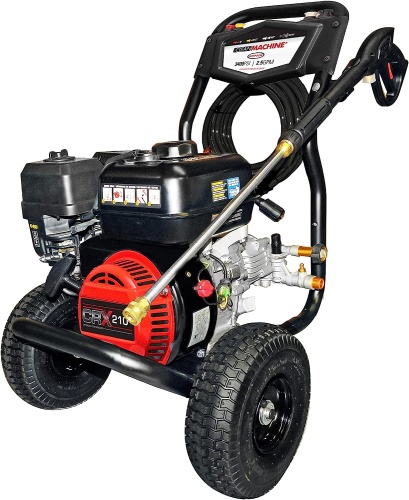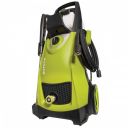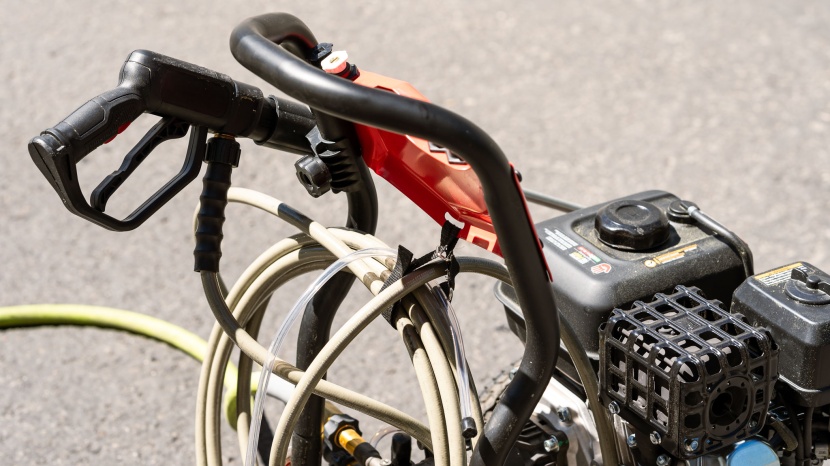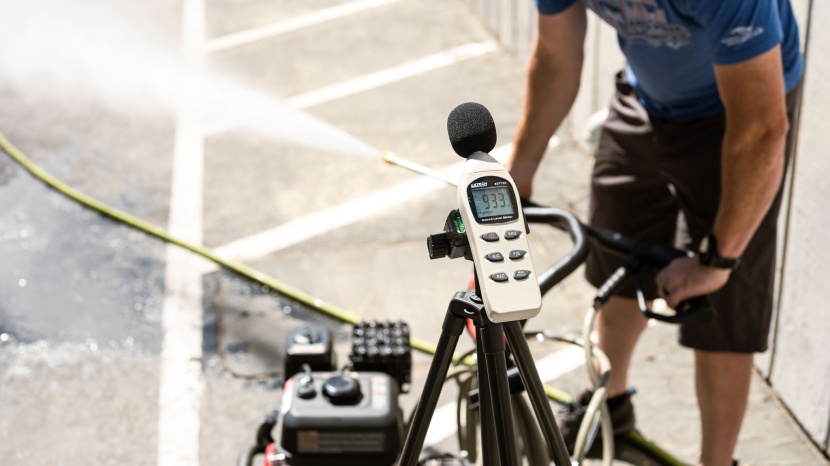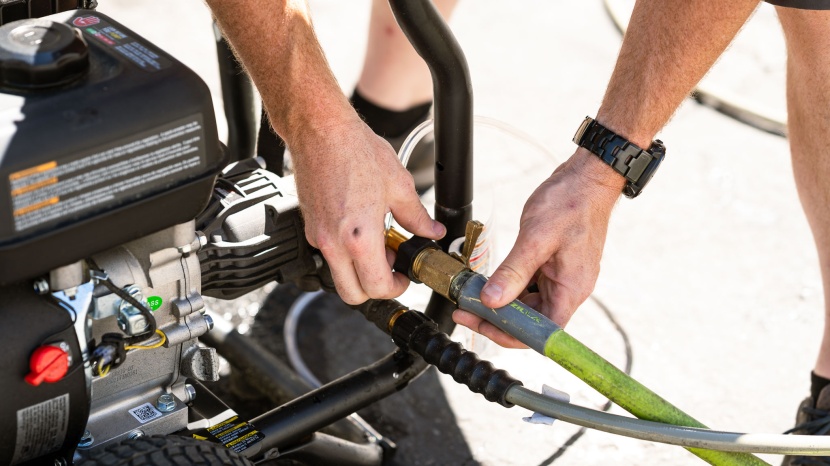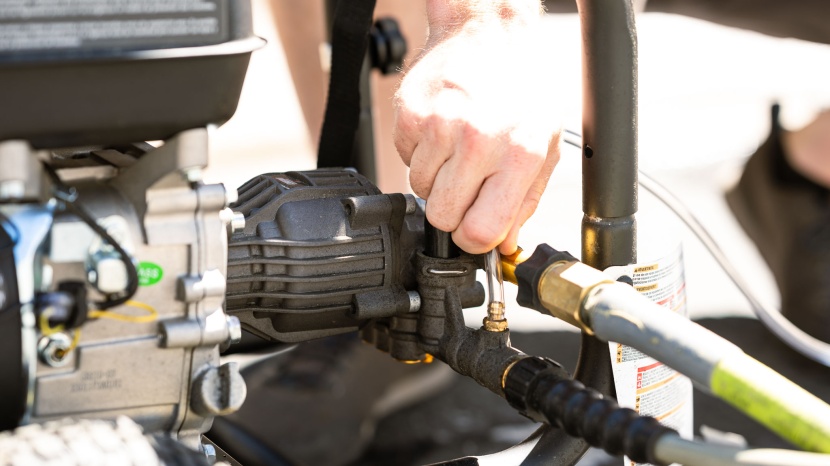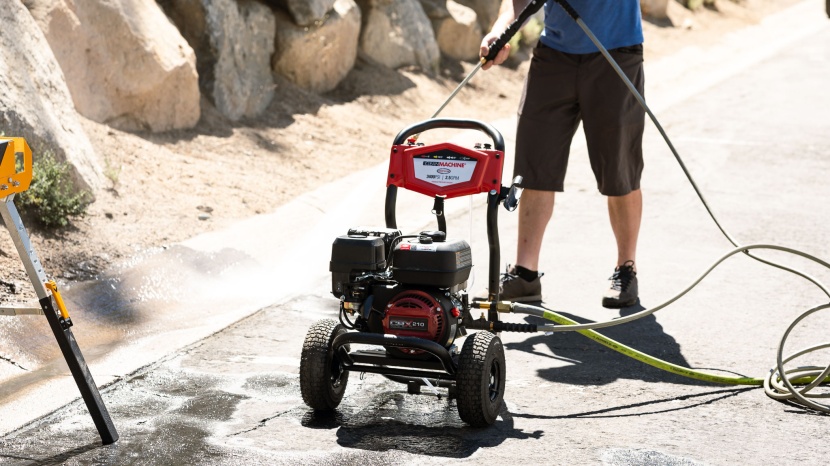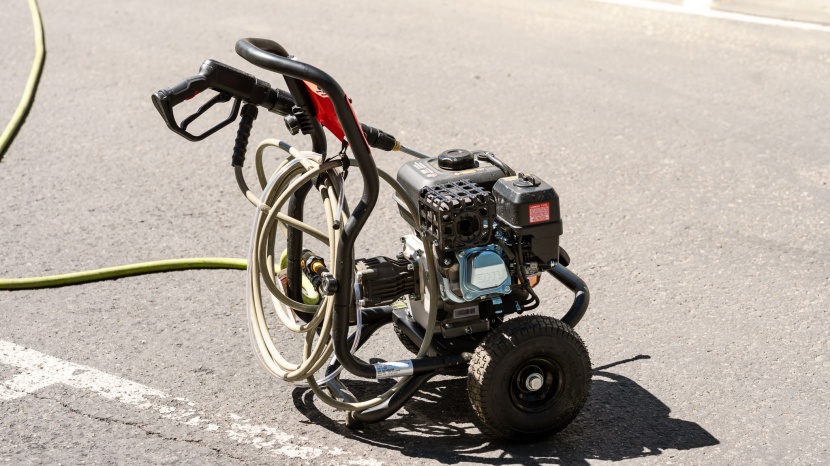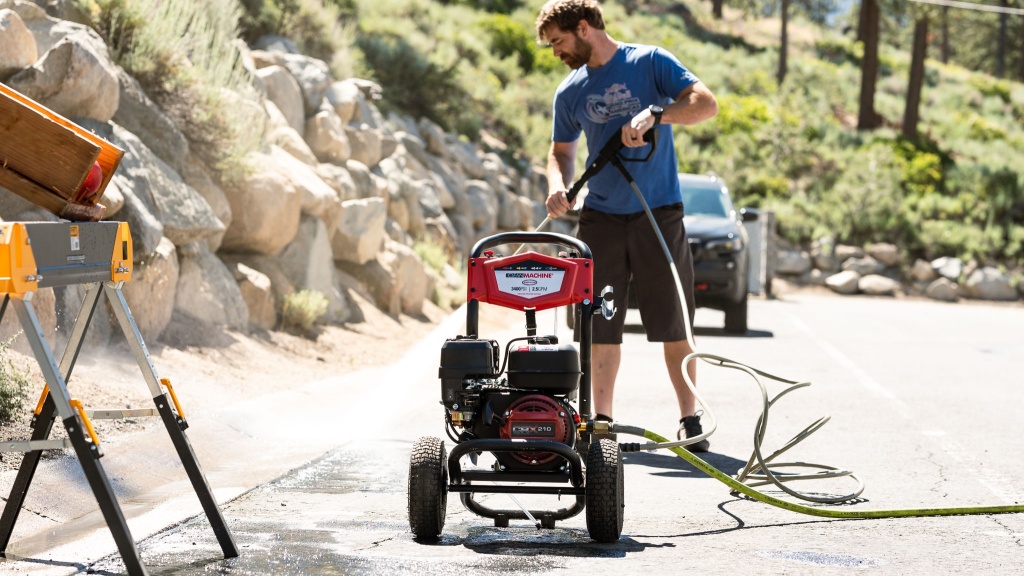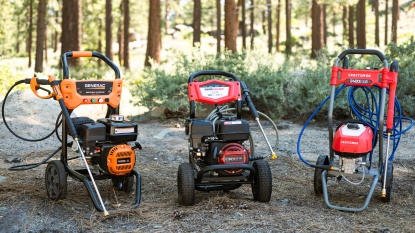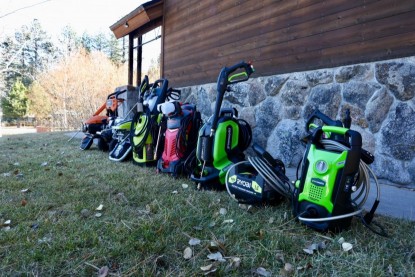Simpson CM61083 Review
Our Verdict
Compare to Similar Products
 This Product Simpson CM61083 | |||||
|---|---|---|---|---|---|
| Awards | Best Gas-Powered Pressure Washer | Best Bang for the Buck | Best Electric Pressure Washer | ||
| Price | $400 List $379.00 at Amazon | $349 List | $160 List $109.99 at Amazon | $279 List | $199 List |
Overall Score  |
|||||
| Star Rating | |||||
| Bottom Line | Pure cleaning power can't make up for this model's lack of mobility | No job is too tough for this high performance gas-powered pressure washer | Good at cleaning and easy to carry, this is a high-value option | We recommend this device for those that are searching for a pressure washer sans fossil fuel | If you want a model that performs decently but won't take a toll on your bank account, this model is a great choice |
| Rating Categories | Simpson CM61083 | Westinghouse WPX3200 | Wholesun 3000PSI | Sun Joe SPX3500 | SunJoe SPX3000 |
| Cleaning (45%) | |||||
| Portability (30%) | |||||
| Noise (15%) | |||||
| Ease of Use (10%) | |||||
| Specifications | Simpson CM61083 | Westinghouse WPX3200 | Wholesun 3000PSI | Sun Joe SPX3500 | SunJoe SPX3000 |
| Measured Pressure | 2300 psi | 2600 psi | 1200 psi | 1650 psi | 1200 psi |
| Electric or Gas | Gas | Gas | Electric | Electric | Electric |
| Measured Flow | 2.16 gpm | 2.3 gpm | 1.21 gpm | 1.08 gpm | 1.22 gpm |
| Measured Cleaning Units | 4968 | 5980 | 1452 | 1782 | 1464 |
| Measured Distance in Bocce Ball Power Test | 7.0 feet | 6.5 feet | 3.0 feet | 3.0 feet | 3.5 feet |
| Measured Cleaning Time | 2.8 min | 2.8 min | 4.7 min | 6.1 min | 5.3 min |
| Measured Decibels at Machine | 93.0 dBa | 83.2 dBa | 73.3 dBa | 70.0 dBa | 83.8 dBa |
| Measured Weight | 67.6 lbs | 63.6 lbs | 16.3 lbs | 42.6 lbs | 28.2 lbs |
| Measured Electrical Cord Length | N/A | N/A | 32.5 feet | 30 feet | 35.3 feet |
| Overall Size | 31" x 27" x 21" | 38.5" x 25.5" x 19.75" | 27" x 10.5" x 9.5" | 35.5" x 16" x 15" | 34" x 13.5" x 17.5" |
| Measured Length of Hose | 26.5 feet | 25 feet | 20.3 feet | 20 feet | 20.3 feet |
| Nozzles Available | 0°,15°, 40°, and soap | 0°, 15°, 25°, 40°, soap | 0°, 15°, 25°, 40°, and soap | 0°, 15°, 25°, 40°, soap | 0°, 15°, 25°, 40°, soap |
| Manufacturer Pressure | 3,400 psi | 3,200 psi | 2,150 psi | 3,000 psi | 2,030 psi |
| Manufacturer Flow | 2.50 gpm | 2.50 gpm | 1.58 gpm | 1.48 gpm | 1.76 gpm |
| Wheels | 10" Pneumatic Tires | 12" Plastic | 5" Plastic | 8" Plastic | 7.5" Plastic |
Our Analysis and Test Results
Advertised as an incredibly powerful pressure washer, the Simpson didn't quite live up to its advertising in our tests. It's also loud, clunky, and hard to move around.
Performance Comparison
Cleaning
The most important task of a pressure washer is to clean well, and the Simpson does a decent job. It's among the highest scorers in our cleaning speed, cleaning unit, and bocce ball blasting tests.
To test cleaning speed, we shake a thick layer of activated charcoal over a white carpet and time how long it takes to clear the dark coating using the washer's 15º nozzle. The Simpson demolished the task, blazing through the grime to show strips of clean-looking carpet. It was among the very best performers in this test, taking less than three minutes to remove most of the charcoal.
So far, so good. In the next step of testing, we measure each washer's cleaning units. Using an independent gauge to measure the water pressure (pressure per square inch, or PSI) and a bucket and stopwatch to measure how many gallons it pumps out per minute (GPM). We measured 2,300 PSI and 2.16 GPM using the 15º nozzle.
Simpson claims that it produces 3,400 PSI at 2.5 GMP. We didn't find that to be the case, though we tried the test with other nozzles as well. This unit comes with 0, 15, and 40-degree nozzles and a soap nozzle. The 0º is the most directed and abrasive and should have the most pressure. When we measured it, we recorded only 2,500 PSI.
So, while the 15º nozzle produces an impressive 4,968 cleaning units and is among the top scorers in the test, it's not the best. And many other washers came closer to their manufacturer's claims.
The last cleaning test is another gauge of raw force. We use each machine to roll a bocce ball up a 24 to 26-degree ramp. This is where the Simpson really shined, blasting the ball to 7 feet, which is one of the best results we've seen.
Portability
The Simpson did not shine in our portability tests. At 67.6 pounds, it's among the heaviest units we've tested. It has one of the largest footprints at 567 square inches. And the wand rests at an angle that gets in the way when storing or moving it around.
It does have large 10-inch pneumatic, or inflatable, tires. They roll over obstacles well, but it's hard to balance the washer's weight over them. Instead of moving like a hand truck, where you rock it back to balance the weight over the tires, this pressure washer moves like a wheelbarrow. You have to pick up the weight with a bicep curl to roll it.
Unlike a wheelbarrow, it's hard to grip this machine and walk at the same time. The handle is awkward. When maneuvering in and out of the lab, we were constantly knocking into things. It's so hard to roll that it regularly bumps our heels, leaving our feet with flat tires. It's not terrible. The other options are just much better.
Noise
Gas-powered pressure washers tend to be loud. This one is louder than most. When we measured decibel levels (dBA) beside it while it was running, they registered at 93 dBA. Twenty-five feet away, they were 74 dBA. It's not quite as loud when idling, but unlike electric options, the noise doesn't stop as long as it's running.
Ease of Use
Though we don't love lugging this large and cumbersome pressure washer around, it's not hard to use once you get it to its destination. The motor generally starts up on the first pull and usually runs smoothly. A few times, it shut off for no known reason during a test. It fired right back up, but we haven't experienced this issue with other washers.
Small gas-powered engines require more care and maintenance than their electric counterparts. You'll have to buy gas (though we ran all of our tests on a half tank), change the oil and air filter every 50 hours, and the spark plug after 100 hours of use. You'll also have to stabilize it for winter or long-term storage.
Attaching a water hose is straightforward, and the port is above the spray hose, making it easier to access. It's also nowhere near the engine, so you don't need to worry about burns. You can add soap using a siphon hose. Just place the small and clear input into a bucket with soap in it. This makes for easy cleanup but is a pain if you need to move around.
The spray hose is coated in grippy rubber. It works pretty well while in use but is prone to tangling and can be difficult to coil when you're done. There's a strap below the handle that stores the hose for you. We find it difficult to use when one hand is holding the coil. When you unstrap it, the entire hose falls, forcing you to recoil the entire thing. We prefer versions with an easy-to-use static hook.
Each nozzle has a dedicated slot in a caddy just below the handle. They rest at an angle though and slide out on occasion. A color-coded infographic on the washer's name plate is easy to understand, showing you the differences between the nozzles.
This machine is very stable, holding its weight low to the ground. When rolling it around or tugging on hoses, we never had the feeling that it might tip over.
Should You Buy the Simpson CM61083?
Because it's so large and cumbersome, we don't recommend the Simpson. If you're not planning to move it much and find it at a great discount, this could make it a good option.
What Other Pressure Washers Should You Consider?
If you need the strength of a gas-powered pressure washer, we recommend the Westinghouse WPX3200 Pressure Washer. It cleans just as well as the Simpson but is quieter, lighter, and easier to move around. We also like the Generac 8874. It's a bit less powerful but is compact and easier to use than the other two.


